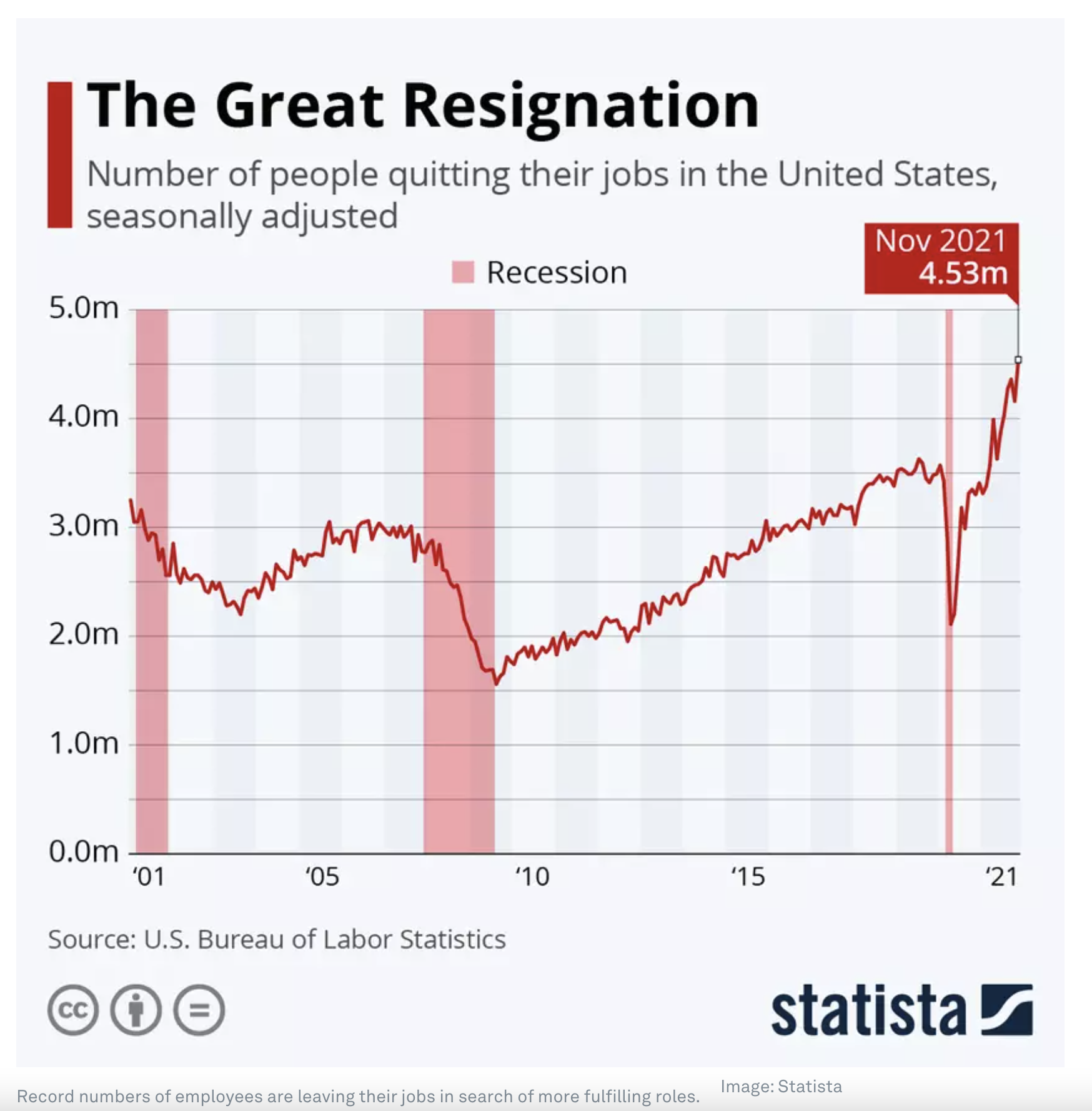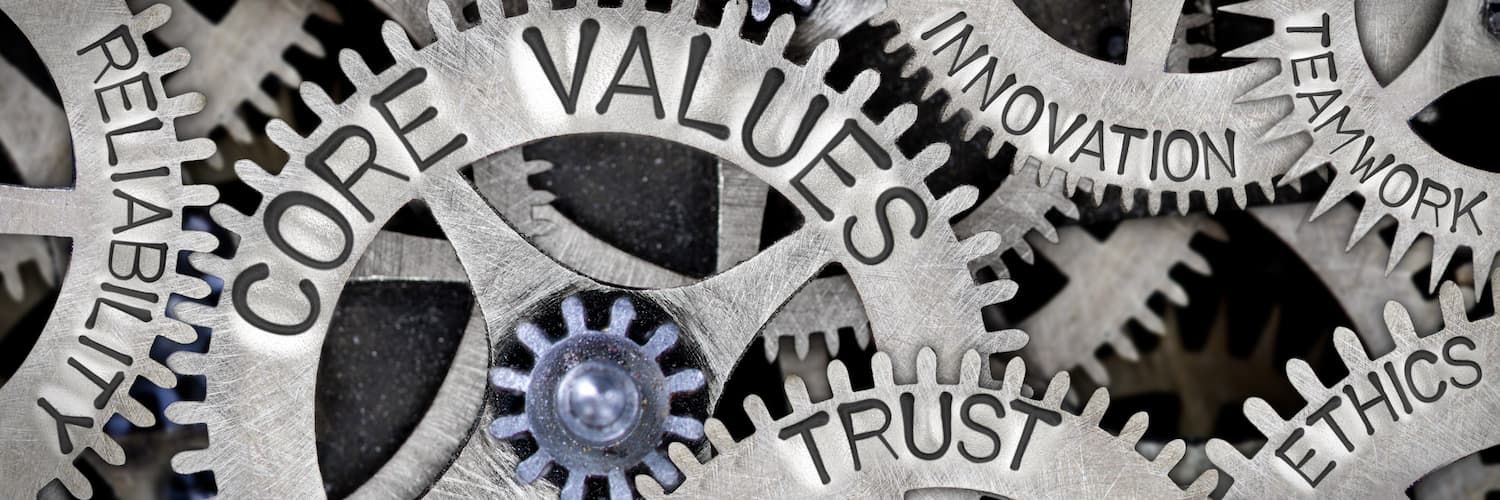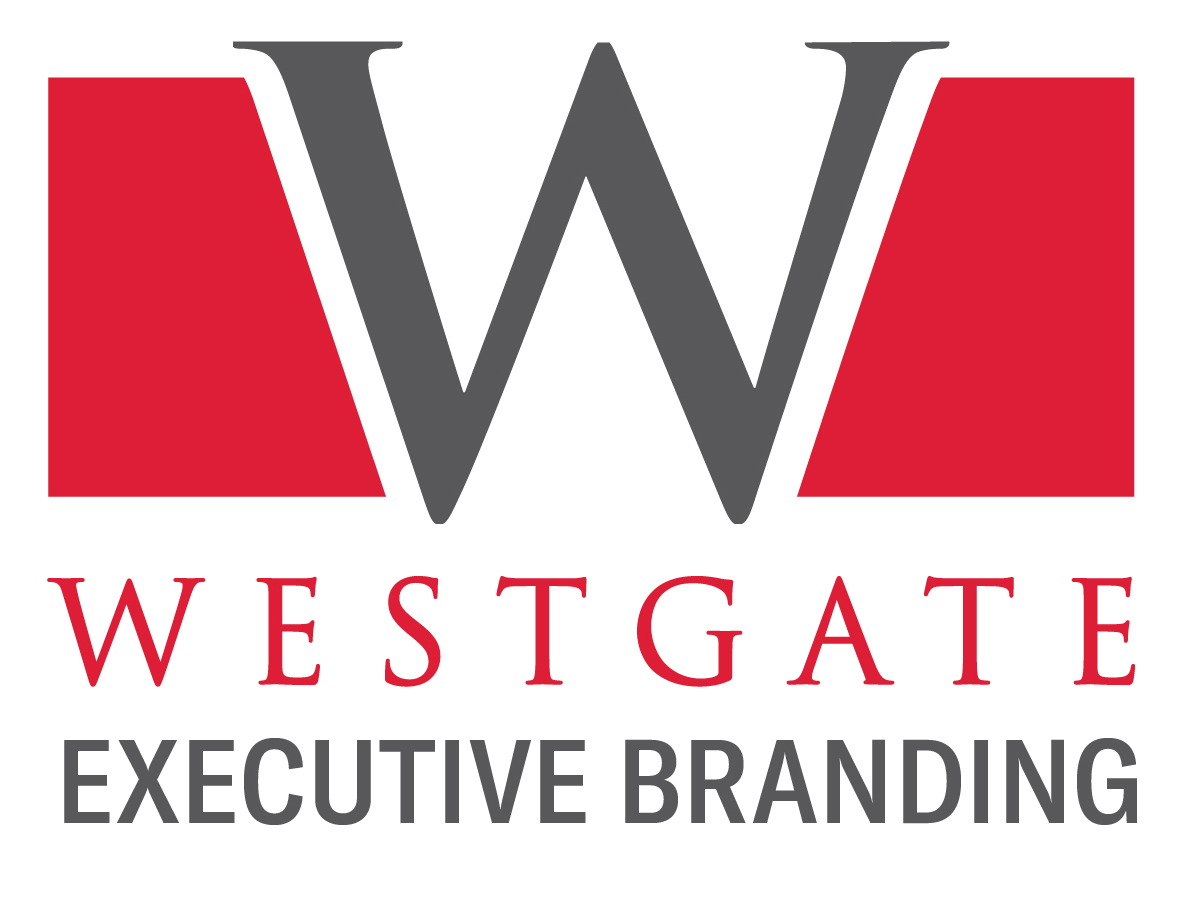For CEOs and Boards—Trends in Employer Branding
People quitting their jobs in the United States is now at an all-time high. The Great Resignation is here—Covid-19 has seen to that. With an influx of vacancies and an urgency from employers to retain top talent, the priority for organizations in 2022 must be retaining employees in order to serve their customers, keep shareholders happy, and keep the economy going.
A shocking 4.4 million Americans left their jobs in September 2021 and with the United States serving as a bellwether, numbers for other countries will be reflected in this trend.
“It is becoming clearer that rather than resigning from work altogether, many employees are actually leaving in search of something more fulfilling and better suited to their values and life choices” (WEF: Explainer: what is the Great Reshuffle and how is it affecting the jobs market? Feb 2022).
This brings us to the Great Reshuffle. Many unhappy corporate executives have set up their own businesses, others are searching rapidly for better-paid, more flexible and fulfilling employment, and some are changing careers altogether.
Gen Z Perspectives
It’s also important to consider Gen Z and their priorities. They are asking the questions that many of us never had the opportunity to ask in the height of our careers:
- Does this serve me?
- Is it meaningful work?
- What is the corporate culture like?
- Is there flexibility in remote work vs. on-site work?
- Will I feel valued by my leaders? What is leadership like?
- How does their product impact the environment?
Leverage Effective Employer Branding Best Practices
We have organized a list of items to help your organization survive the Great Resignation and navigate the Great Reshuffle.
- To attract great talent, be crystal clear about your organization’s values and promote your “employer brand” consistently and constantly within your talent acquisition funnel, including your website, annual reports, proxy statements, and especially job descriptions. Remember, high-achieving candidates will be working on their personal branding, and it will be crystal clear. If your brand isn’t crystal clear, those ideal candidates either won’t find your company or won’t care to.
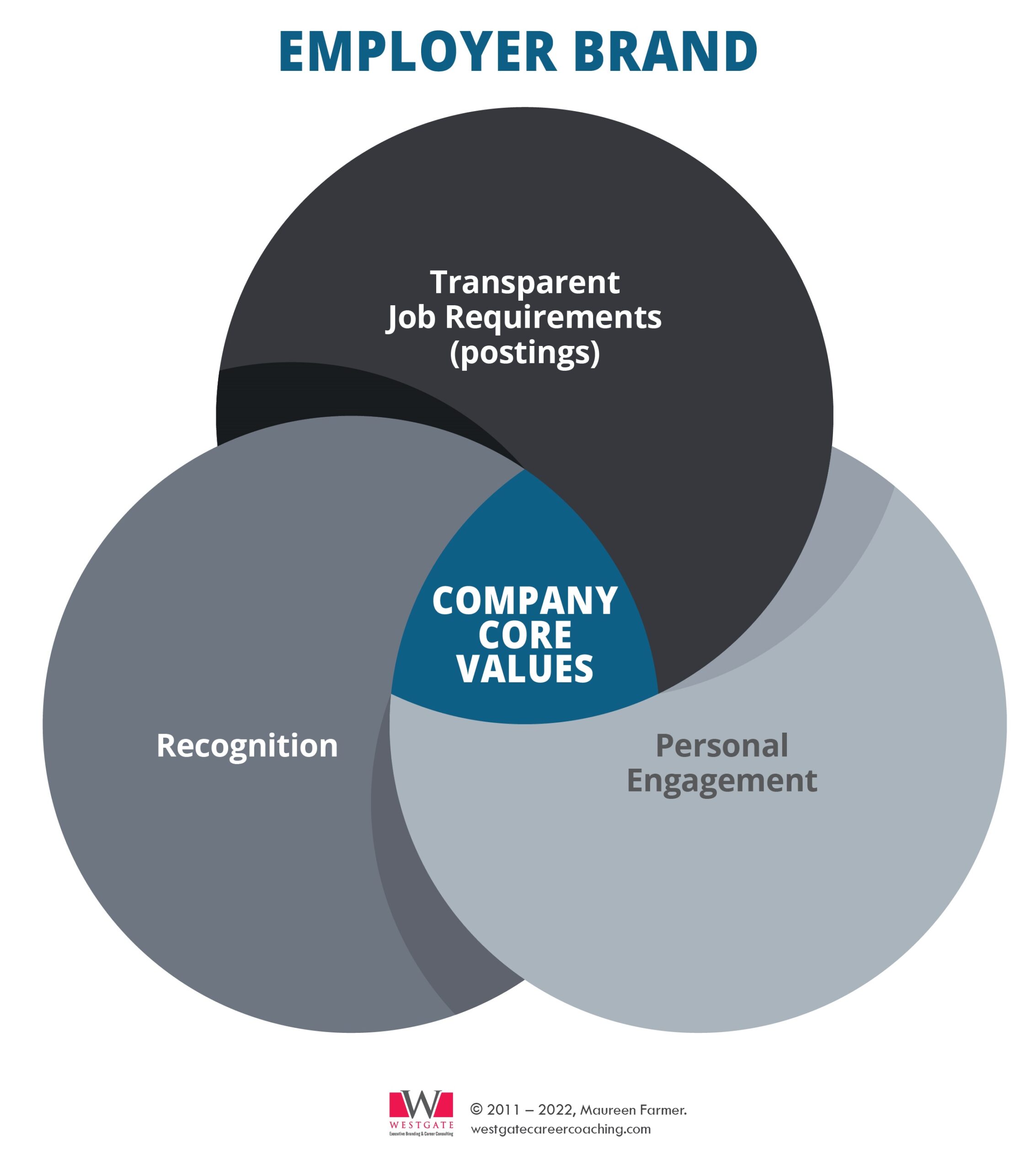
- Consider hiring a copywriter to write your company’s job postings. Powerful conversion copywriting targeted toward your ideal candidate can save valuable time by attracting the best candidates to your organization. Furthermore, to attract great talent, write compelling and transparent job postings and performance profiles that communicate—at a human level—what specific skill, characteristics, and values the organization is seeking in down-to-earth, emotive language that engages the reader. Write the job description specifically and especially for the “ideal” candidate. Clarity is key.
- "A conservative estimate among social scientists is that most people have about 300 friends and acquaintances. Those three hundred people each know three hundred people for a total of 90,000 people who are friends of friends of employees. Referral Networks leverages the Internet to help tap into these extensive networks and thereby reach a large pool of qualified candidates." During a study, respondents were asked to rate the effectiveness of their organizations’ employee referral programs on several criteria. Cost-effectiveness received the highest ratings overall. Depending upon the position, anywhere from 9% to 47% of respondents indicated that employee referral programs were effective or extremely effective for filling vacancies (Society for Human Resource Management Research: Employee Referral Programs).
- To select great talent, test the candidate’s values for alignment with the organization’s values. If there is no alignment, there is no match. This should be an important part of the conversation during interviews. Interviewees should be asking what the company values are and how they’re being implemented, and the interviewers should have a clear answer. Hire slow and fire fast and as cliché as this may appear, it’s a wise strategy because the cost of hiring the wrong resource can cripple teams, production lines, and executive management teams.
SaaS Case Study Mortimer and Ebenezer
Mortimer was the CTO of a Fortune 1000 SaaS company in the midmarket in North America. Boasting the highest employee retention rate (measured by division), he reported to the CEO with a peer team of 6 others.
An expert in post-merger technology integrations, Mortimer was popular with the 240 employees who reported to him both directly and indirectly. Mortimer understood the magic and power of recognition and consistently rewarded his people and it cost him little, but effort and time. Mortimer recognized the individual contributions of the people in his division serving as a role model to others.
Mortimer’s teams consistently delivered new products and product feature updates on time, on budget, and with impeccable quality.
Retaining and engaging key technology professionals is a cause and result worth celebrating—however, this is where it went sadly awry. Mortimer’s peer saw to that. Ebenezer had a reputation for bullying, stonewalling, and wreaking havoc in the company.
The CEO repeatedly ignored it and the senior leadership team had the highest turnover rates in the industry. Despite the disfunction, the company remained profitable, but I cannot help but wonder how much MORE profitable they would have been if this behavior had been addressed.
Don’t let this happen to your organization. There are many effective resources and solutions available for this type of challenge. Ask us!
What happened to Mortimer? He left. With a broken heart and a deflated team left behind, Mortimer moved to an organization whose values aligned with his own.

Engagement (or disengagement) starts at the top.
- Many products help to identify core values, including DISC assessment and motivators assessments. Candidates can and do adapt their behavior long enough to get through a series of job interviews. The real test, especially at an executive level, is what their performance and commitment demonstrate over the first 120 days once the guard of adaptive behavior has slipped away. We are qualified DISC practitioners with a Cronbach Alpha observation of .87 (an overall Very Good ranking of the assessment). This makes the A24x7 DISC assessment one of the highest Cronbach scores in the DISC marketplace as verified by the Assessment Standards Institute, 2019.
- To retain your people, consistently engage your team with regular and transparent communications. This cannot be understated. With video and audio technology, the CEO can record a simple weekly message to the organization with a simple message, including what is coming up for the week, what challenges they are currently facing, and what the wins were for the previous week. The critical success factor for this strategy is consistency because consistency builds trust. Trust builds loyalty and loyalty leads to retention. “We’ve spent decades studying the policies and practices around diversity, equity and inclusion (DEI), and there’s no question that building a culture where everyone thrives takes a high level of commitment and consistency. Our research finds that managers are the key to making it happen. From supervisors on the factory floor to department middle managers to senior executives in the corner office, leaders who work diligently to increase a sense of belonging and respect, remove bias, follow fair hiring and retention practices, and establish safe spaces for employees of all races, ethnicities, genders and abilities will find that workers don’t want to leave. In fact, companies that earn a reputation for being a place where everyone is seen, heard and valued may not have to worry about the Great Resignation — whether that’s in the coming months or long after the COVID-19 pandemic is behind us” (WEF: The Great Resignation: how can companies combat their talent shortage, Dec 2021)

- To retain, recognize your people regularly and authentically. Do not underestimate the power of recognition. A simple note, voicemail, text, or email will generate loyalty and cost you nothing but time. When you know your team at a human level, you will learn what motivates them, and then you can use this knowledge to recognize them in a way that is important to them. Recognition is of “psychological importance” (Stanford Encyclopedia of Philosophy, https://plato.stanford.edu/entries/recognition/).
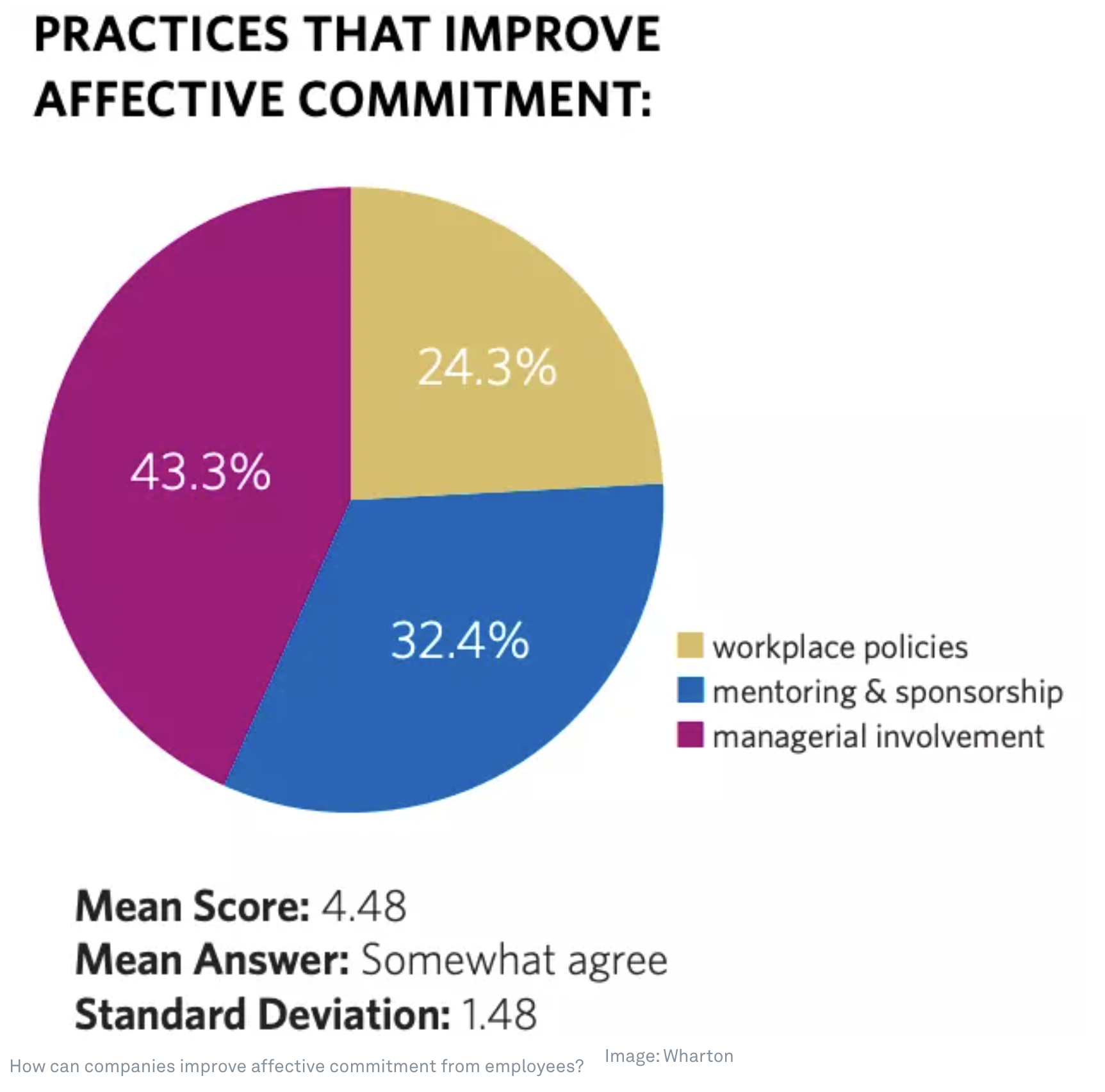
- Listen to both your employees and your incoming candidates. If we are aware of the Great Resignation and why it is happening, the next logical step is to check in on our employees and prospective teams for their opinion and suggestions. For example, remote work options have become increasingly more appealing to employees. Through the pandemic, we have been able to confirm that remote work not only works, but actually produces more productive work. Many employees and candidates want to know that flexibility around remote work or a hybrid model is an option.“Along with pay and benefits, flexibility is increasingly becoming a differentiating factor. ‘Leaders must be focused on cultivating thriving cultures of internal mobility, prioritizing continuous learning and delivering robust benefits to support their workers,’ says Prudential Vice-Chair Rob Falzon” (WEF: Explainer: What is the Great Reshuffle and how is it affecting the jobs market? Feb 2022).
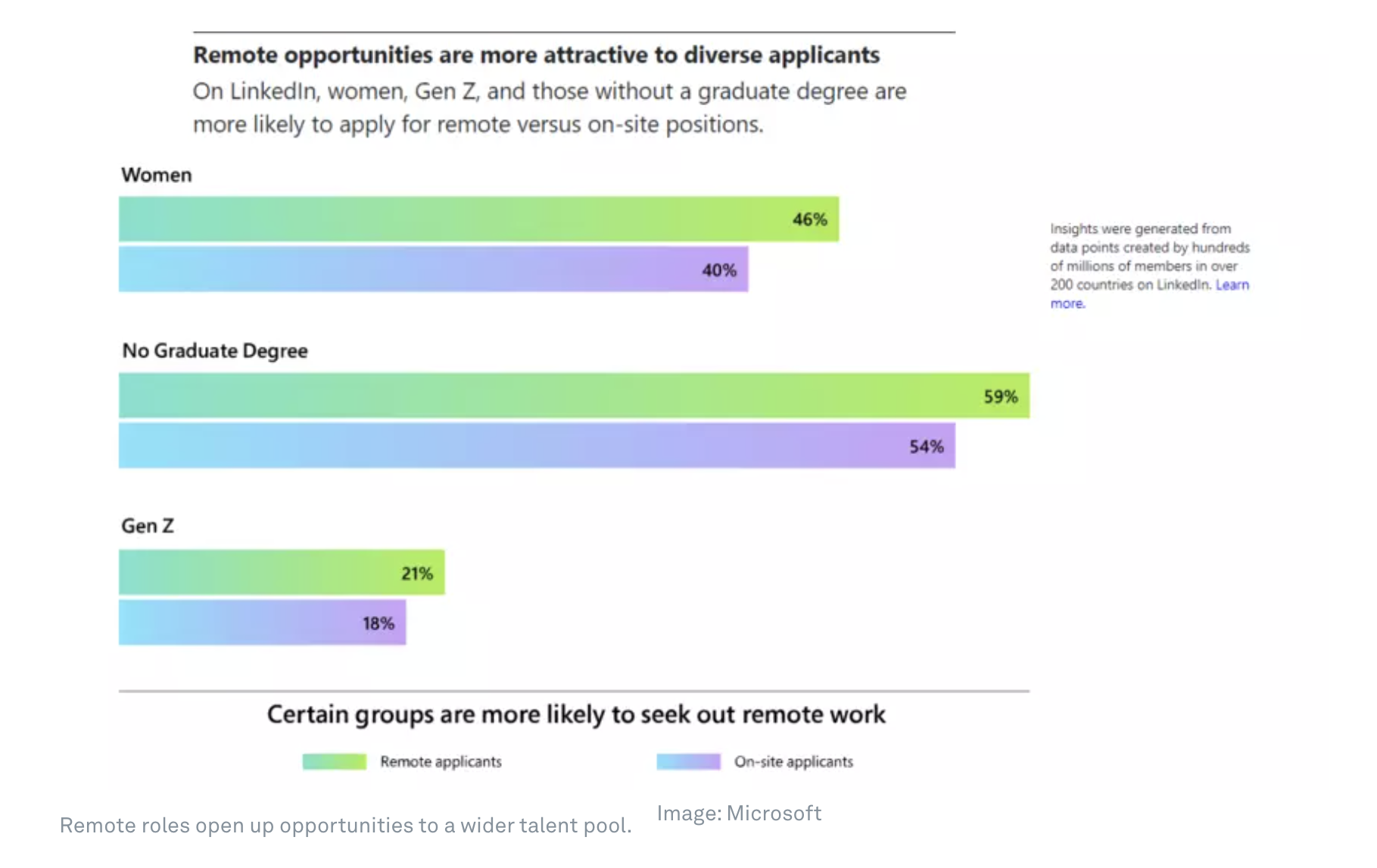
An astounding 44% of workers can work remotely during the COVID-19 crisis while 24% of workers are unable to perform their current role.
“This estimate indicates an aspiration to expand the availability of remote work” (WEF: Future of Jobs 2020).
If you have a top-performing employee who would benefit greatly from a hybrid model of remote work, they will absolutely seek out other options that will accommodate this. Listen to your employees and make sure they know that there are flexibility options and even more importantly, safe spaces for conversations around adjustments. This can make or break your dream team.
The value of corporate empathy as a retention strategy
The world of employment is changing rapidly and here is what we know for sure: Successful organizations begin with the people and successful people are evidently valued at their place of work.
“Leaders should consider two truths: first, talent turnover is an expensive problem and therefore must be solved. Second, it’s a problem that can be solved.
The empathetic organization embraces a culture, starting in the C-suite, that practices and values empathy. That means developing emotional intelligence at the enterprise level, and genuinely listening to and sympathizing with workers’ feelings. Empathy comes naturally to humans. It’s the right thing to do and it also brings business benefits. When employees feel heard, understood and cared for, they work harder, take more risks, and help others succeed. This, in turn, improves talent retention” (WEF: Struggling to retain top talent? Try corporate empathy, Jan 2022).
If you found this information useful, consider sharing it with your team at your next meeting. Contact us today for a confidential (but frank) conversation around employee engagement and employer branding. At Westgate, we optimize CEO performance and pave the way to enhanced relationships with the board, investors, and employees, which collectively leads to higher profitability and earnings per share.
3 steps to a LinkedIn profile headline that will jazz recruiters
If you liked this
post, please share it with your friends and colleagues.
